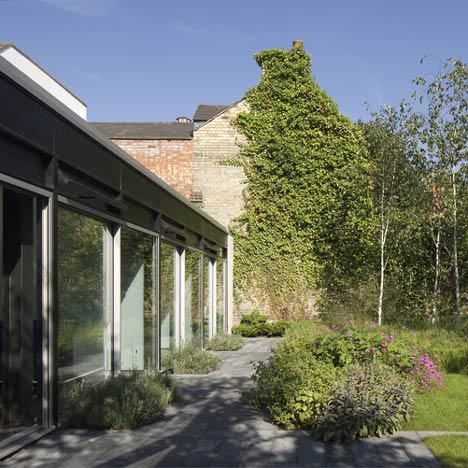
Hampstead Lane by Duggan Morris Architects
A 1960’s residence renovated by London architects Duggan Morris has won the RIBA Manser Medal 2011 for the best new house in the UK.
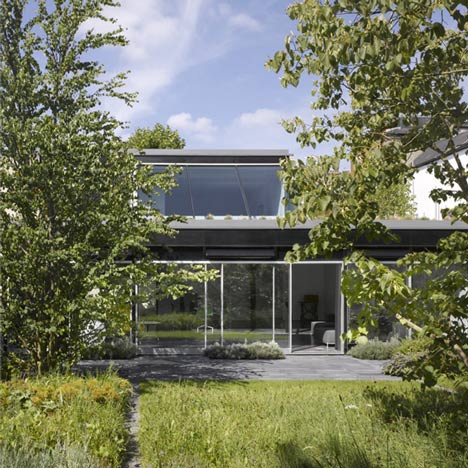
Located in a conservation area in north London, the two-storey Hampstead Lane house is constructed from fair-faced concrete blocks, which the architects cleaned and restored.

The original aluminium-framed windows have been replaced with similar alternatives and a new steel structure replaces previous load-bearing internal walls.
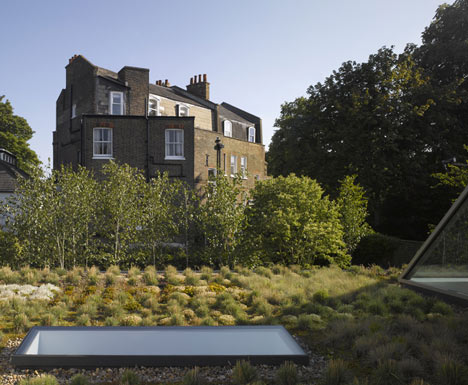
A new blanket of sedum covers the roof, which was also repaired.
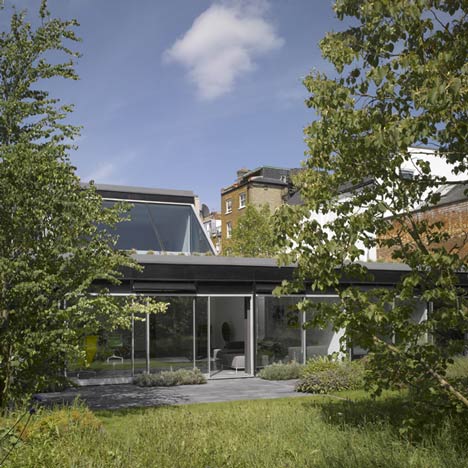
Previous Manser winners include an extension to a mill-keeper’s house and a seafront timber residence.
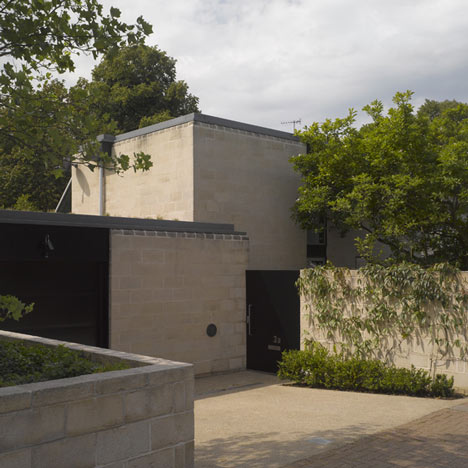
Photography is by James Brittain.
Here's an account of the project from Duggan Morris:
Hampstead Lane
Background, Site, Context and Planning Considerations
Highgate is one of the most expensive London suburbs in which to live with an active conservation body, the Highgate Society, engaged in the protection of its character. This building, a low rise modernist property built in the 1960's, was designed and built by a well-known local architect couple, who had lived there throughout the remaining years of their lives; Douglas Stirling Craig and his wife Margaret.
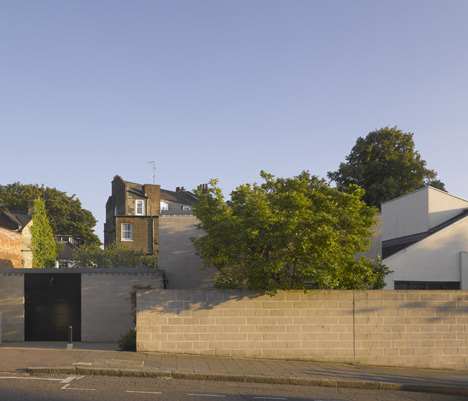
Stirling worked for Coventry City Council, Stevenage Development Corporation, and with Margaret, set up architectural practice in the late 1950's completing a number of notable projects for a number of private residential clients adopting a Brutalist style of exposed surfaces inside and out. This approach is clearly evident in the design of 3A Hampstead lane built by 1968.
The Original Building
The original building, featured 4/5 bedrooms, along with reception rooms, a kitchen, dining room, utility room, two bathrooms, an integrated garage, and a 60ft garden overlooked by a glass-dominated rear of house. The primary palette of materials consisted of a light coloured fair faced blockwork skin (inside and out) with a silver sand and white cement mix, punctuated with mill finish aluminium window frames and coping with flush pre-finished white hardboard faced doors to the front and flank elevations. To the rear, the primary material was glazing again in mill finish aluminium, with panels over in a clear laquered birch ply, whilst the window surrounds were completed in a plain deal pine and the window cills in mahogany.
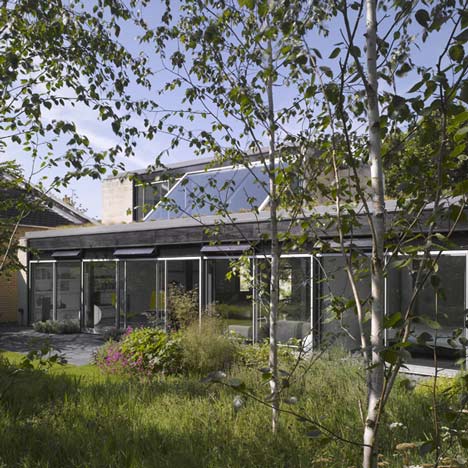
Internally the floors were a white flecked vinyl asbestos tile. All the interior joists and woodwork were in plain wood, except for the top of the T and G planking on the 1st floor. There were no skirting boards or door trim and the only places with a dropped ceiling were the kitchen, entry and utility room. The original heating was under-floor electric embedded in the screed.
Introduction to the Project
In winter 2008 Duggan Morris Architects were invited to consider proposals for the refurbishment of a house in Highgate Village on the north-eastern corner of Hampstead Heath. The building was however, no run of the mill Georgian Villa, but a late 20th Century Modernist building, designed in the brutalist style, by a well-known local architect. The clients were themselves also highly successful Architects, working on national and global stages for separate well known practices, but with too little time to develop the designs for the project themselves.
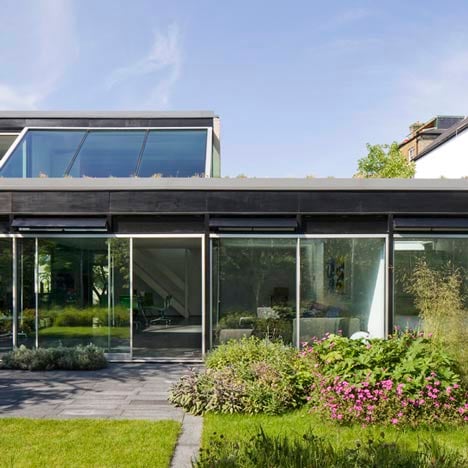
The tri-part involvement of three generations of architects on such a humble building seems highly relevant in the current political, economic, and environmental climate. It seems appropriate to state that the importance of good design cannot be overlooked in this respect. Brutalism continues to influence current generations of architects, whilst much of the public and indeed central government continues to chastise the movement for its perceived failings. In this case, a building which has clearly contributed in a unique way to the local conservation area has been saved from demolition by the enthusiasm and foresight of an informed client and design team.
The Brief
Working closely with the client in a highly collaborative manner, a brief emerged which sought to carry out a full 'renovation' of the building fabric, whilst also intervening carefully to create a contemporary dwelling, of a more fluid arrangement of spaces, rather than the celluralised original. The brief also sought a greater connection of the living spaces to the gardens, which themselves would be completely redesigned. At roof level, it was intended to replace the existing membrane with a modern version, whilst the services were completely overhauled to modern day standards.
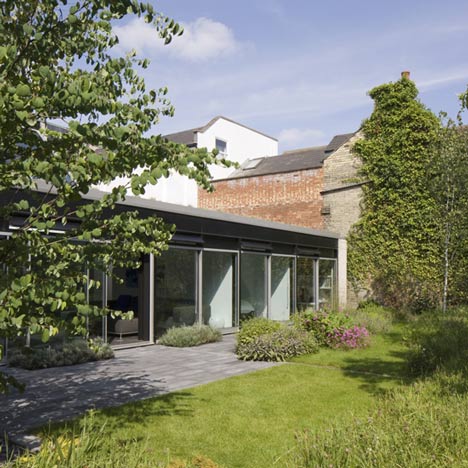
In addressing the building, the design team has taken a measured approach to the condition of the as found, aiming to retain and re-use wherever possible, removing only the surface layers of detritus and cladding which has accumulated over the years.

The design of the scheme thus is perceived as a ‘renovation’ rather than a refurbishment, with most of what we found remaining in-situ. Thus the external skin of blockwork has been renovated through a painstaking exercise of washing and scrubbing and repointing to ensure a further 50 years of life. The roof membrane was retained and repaired and a new sedum blanket of plug planted specimens added over, creating a mini eco system for local wildlife. The landscape too has been added to, rather than removed with a large number of mature trees added to front and rear.
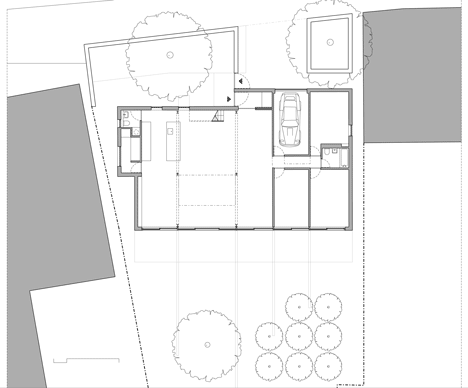
Internally things like the stair, balustrade, floor boards (first floor) and most of the original doors have been retained and reused. Where we have adapted and altered space, we have done so sparingly and simply. The main overhaul was the ground floor slab replaced with new insulation, screed and a wet underfloor heating system connected to a new energy efficient boiler.
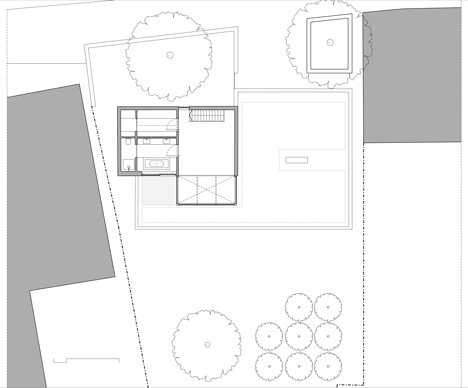
In the main, what we have done is simple, light but aimed at a general improvement of the environmental condition and performance.
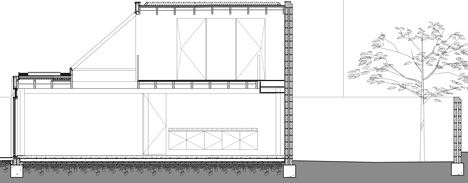
The Interventions
The renovation works focussed on retaining the integrity of the original house, through extensive research and analysis of historic documents, drawings, photographs and archived material.
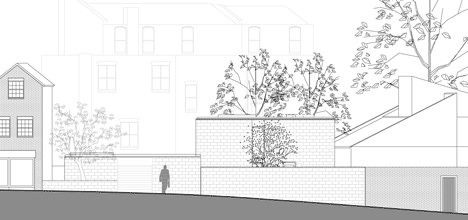
Much of the work involved a cleaning and restoration process for the exposed block work, whilst the glazing system was designed to closely accord with the original single glazed system, but achieving modern standards and U-Values.
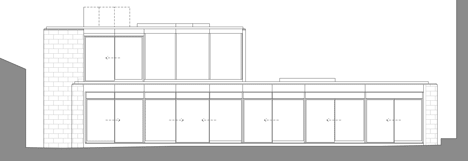
Where interventions to the layout of the internal spaces has been required, this has evident through the clear communication of new structural elements; a new dark grey steel frame which spans the key spaces, in place of previous load bearing walls. The project also includes a full integrated scheme for the landscape, which now has a greater connection to internal spaces.
Summary of time-table
Commissioned: February 2009
Negotiated Tender: July 2009:
Construction: Sep 2009
Completed: July 2010